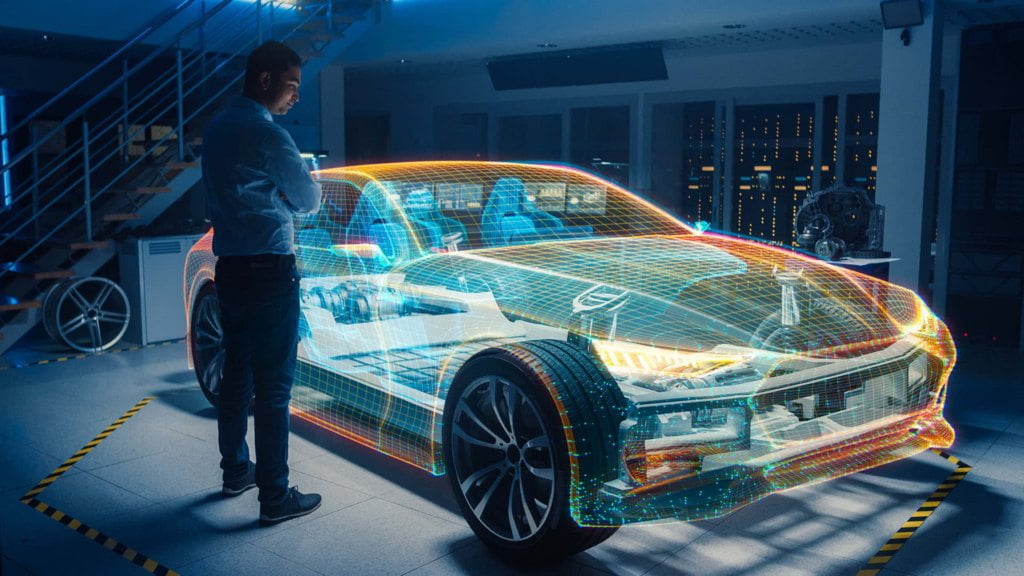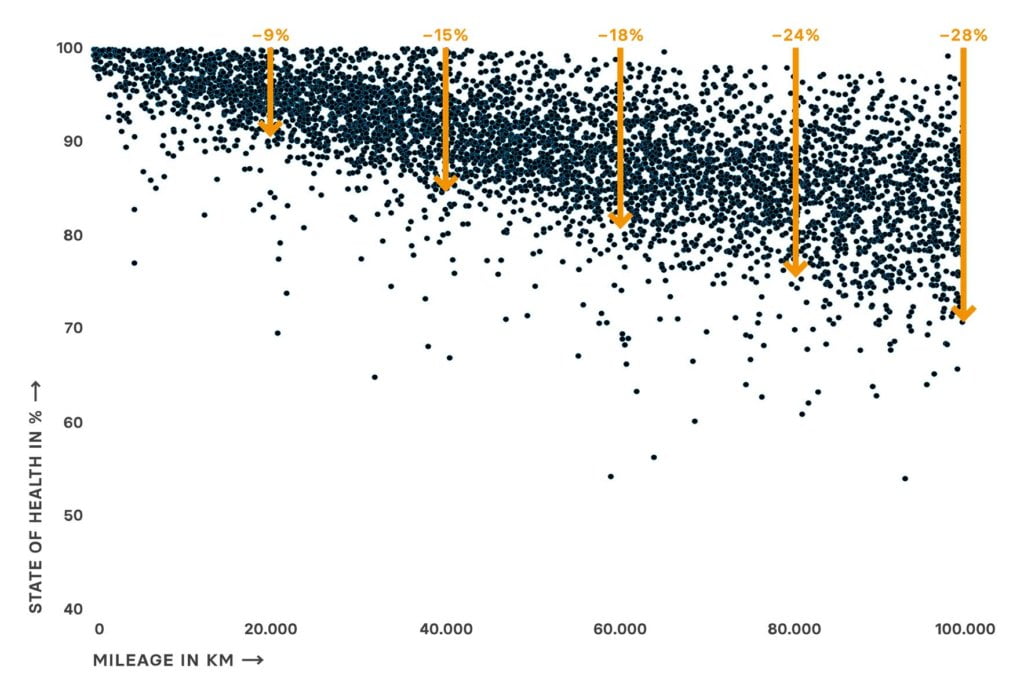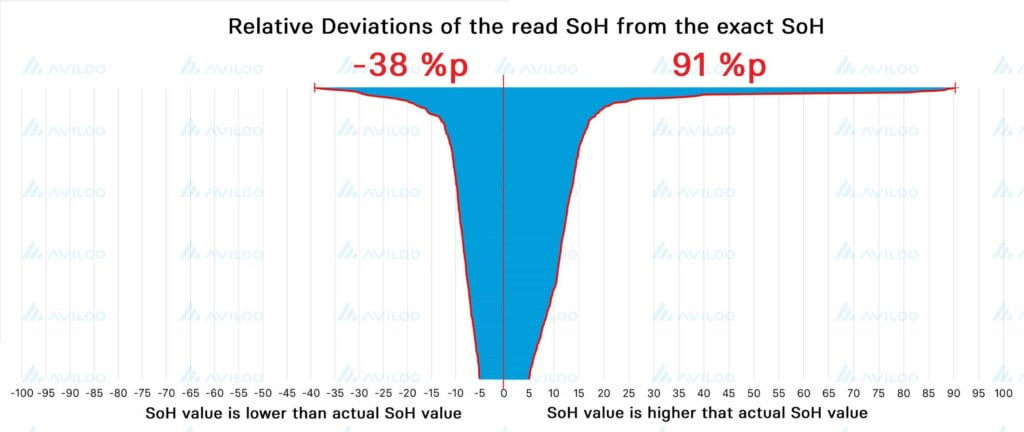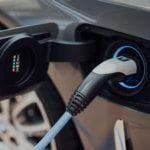This whitepaper is available to download as a pdf here.
What is meant by “State of Health” (SoH)?
The Term
The term SoH stands for “State of Health”, i.e. the state of health of the battery of an electric or plug-in hybrid car.
To know what state the battery of an electric (EV) or plug-in hybrid (PHEV) car is in, the SoH must be determined. However, electromobility is still a young industry in which uniform standards and norms do not yet exist. The lack of standards also means that there is no uniform method for calculating battery health (SoH).
Our starting point is what every EV driver is interested in – range.
Importance
For every driver of an electrically powered vehicle, it is important to be informed about the SoH of your own car and thus to be able to estimate the actual range that can be achieved with the vehicle. This is because, unlike a vehicle with an internal combustion engine, the heart of the electric car, the battery, must be checked regularly.
A detailed test of the battery can also help optimize the use of the electric vehicle and identify errors in its use. In addition, information about the actual SoH of the battery increases driving safety.
Knowing the health of your own battery, for example, can prevent a vehicle owner from making an investment of up to 22,000 euros for a new battery without need.
AVILOO has the most comprehensive database on battery degradation behaviour of over 90% of all available electric cars and plug-in hybrid models. Intensive testing processes, monitoring and data analysis have been carried out over the past three years.
So how can the SoH of a battery be determined?
The determination of the SoH by means of range could be based on the following calculation: “Current range” (corresponding to the current state of the battery) divided by “New state range” – the result is then given as a percentage value. However, the decisive factor in this calculation method is that the same driving style is used as the basis for both values.
Easier said than done! Because every driver has their own individual driving profile. External influences also affect the battery’s extractable energy and thus the vehicle’s range under test. A calculation method that is transparent and independent of external influences would be the determination based on the WLTP driving cycle.
- WLTP stands for “Worldwide Harmonised Light Vehicles Test Procedure”, a test procedure used to determine the fuel consumption of vehicles.
- The WLTP Data is intended to reflect a driving profile that is as close to reality as possible, taking into account various influencing factors.
- “Realistic”. Of course, one could now argue again about the term “realistic” and it is no secret that for many cars the real range is far below their WLTP range. The advantage, however, is that this method is the same worldwide and therefore comparable and independent of the driver‘s driving style.
WLTP Calculation
In principle, the formula “current WLTP” divided by “new State WLTP” would be used again – the value for “new state WLTP” is the value specified by the manufacturer for the range. In order to determine “current WLTP”, the car to be tested would actually have to be driven according
to the WLTP standard. However, this process costs vast amounts of money, is very time-consuming and is therefore not an option for the average consumer. The reference value, the WLTP range new condition, on the other hand, could be taken from the manufacturer‘s data sheet to calculate the percentage value.
A Simple Solution
A simple solution is to measure during the charging process! Unfortunately not so simple after all…
The easiest way would be to measure the amount to be loaded. However, this is influenced by external factors, charging method, etc. and will therefore be greater than the amount of energy actually stored in the battery. Therefore, it is currently insufficient as the sole determinant of battery condition.
The health-determining parameters of a battery are its nominal voltage in volts [V], its capacity in ampere-hours [Ah] and the resulting amount of storable energy in kilowatt-hours [kWh]. However, these parameters change not only due to the service life, but also due to environmental influences (such as temperature), discharge characteristics (driving profile), etc.
AVILOO Technology — Manufacturer-independent and based on real data
So if you want to know how far you can actually drive a vehicle without breaking down halfway, you should leave the measurement of the SoH value to those whose technology you know and trust.
With AVILOO you get not only high quality calculated data, but also real values from the tested car.
To avoid various discrepancies and to provide owners of an electric vehicle with an accurate, reliable result about the SoH of the vehicle, AVILOO has developed a very individual test. The AVILOO method for SoH calculation provides an honest, meaningful result based on the extractable energy in kWh. The extractable energy in kWh is comparable to the tank capacity in liters of gasoline or diesel that can be extracted from an internal combustion vehicle.
However, there are further serious differences or peculiarities in this comparison that are not known from the combustion engine. As we already know, the extractable energy in kWh is strongly dependent on the temperature of the battery, as well as the discharge characteristics and other aspects.
How SoH is calculated using the AVILOO PREMIUM TEST
The AVILOO Box is simply connected to the OBD interface of your vehicle. Then, during battery discharge from 100% to 10% through normal everyday driving, it captures millions of battery-relevant data points. This does not require any special attention or adjustment to your driving style.
The analysis is based on all data collected during the discharge. Millions of battery-relevant data points from the vehicle are transmitted in real time to the AVILOO Battery Data Cloud platform. After completion of the discharge, the validation of the transmitted data and from it the analysis of the state of health (SoH) of the traction battery is performed.
All data is evaluated and converted to a comparable result on the AVILOO servers using the necessary compensation factors. The calculation is made according to the SoH display in the vehicle on the total 100% and is shown transparently in kWh on the battery certificate. The result is the value used to assess a battery condition.
- Current energy content is measured usable energy of the test vehicle (100% to 0% according to the display).
- New state energy content is measured usable energy of the tested vehicle model in new state (100% to 0% according to display).
- SoH value is a percentage value that provides information about the state of health (SoH).
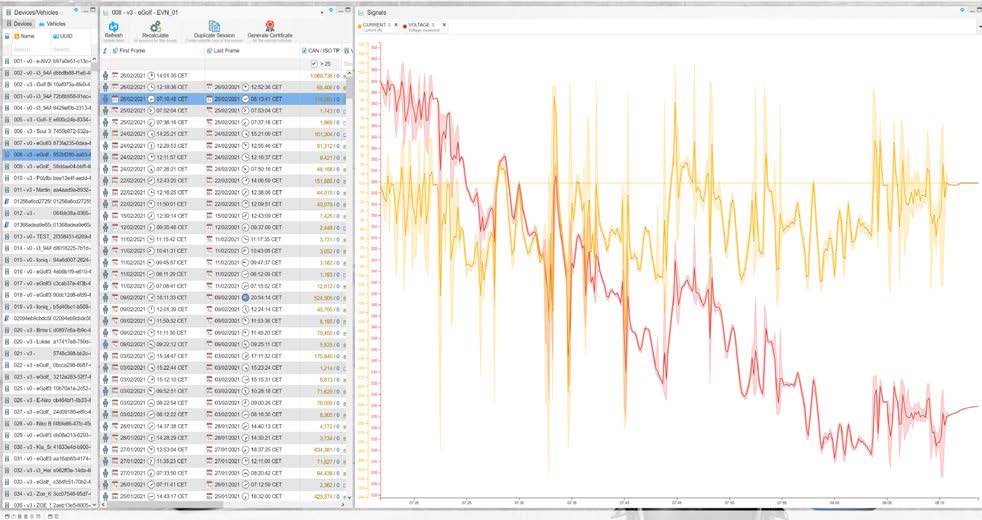

The Basics of Analysis
State of health (SoH) is calculated using sophisticated algorithms and models. Two important factors considered in the calculation are temperature compensation and discharge rate compensation (type of driving).
To ensure temperature independence during the battery test, each measurement result is compensated to a battery temperature of 25°C.
To ensure discharge rate independence during the battery test, each measurement result is compensated to a typical discharge rate according to the WLTP cycle.
Example:
The recorded battery capacity (100% to 0% according to the display) for a specific car model is 60 kWh when new.
However, during the AVILOO PREMIUM test, only a removable capacity of 54 kWh could be determined, which corresponds to the “current energy content”.
This means that the SoH of this battery is still 90% compared to the new condition.
Where do the different SoH values come from?
As already known, the SoH reflects the functionality of the battery and shows how much energy can be stored compared to the new state.
In order to answer the question of whether the SoH shown on the display of the electric or plug-in hybrid car corresponds to reality, it must be read out or calculated. The relevant SoH of a battery depends strongly on the reliability of the data used for the SoH calculation. Depending on which source is used to calculate the SoH, the data that comes out of the calculation also changes.
The SoH values of different sources are basically not comparable. To illustrate the problem, we created a graph of 1000 statistically relevant cases, contrasting and visualizing the SoH values read out with the SoH values actually analyzed based on real data. The graph shows the deviations in percentage points (%P) between these two values.
“Read SoH values” are those calculated by the BMS of the respective vehicle and used for the range calculation. SoH values analyzed based on „real data“ are accurate battery health results generated via a process.
The zero line representing exact SoH values is the baseline. The deviations of the read SoH values are shown as lines to the left (read SoH value is smaller than the actual SoH value) or to the right (read SoH value is larger than the actual SoH value).
Whether the absolute values are 90% or 50% SoH, for example, is irrelevant for this presentation. It is important how much the read values differ from the measured, actual values. In some cases the deviation of the comparative values is ±5 %P, in extreme cases even up to +91 %P.
The reasons for the discrepancies
Reason 1: Technical Reasons
This extreme dispersion simply comes from the inaccuracy of the algorithm used to determine battery health.
The health status is projected in the battery management system (BMS). Each BMS manufacturer creates an algorithm for this purpose, based on models of battery cells, operating models and other aspects. These are intended to map the evolution of the battery‘s health. Very small processors with limited power are used for the calculations. Over the course of their lives, these processors need to calculate SoH estimates as accurately as possible, but here we see that many of these processors are reaching their performance limits in doing so.
The AVILOO evaluation method is based on the extremely powerful AVILOO Battery Data Cloud and continuously learns, which is a huge technical advantage.
Reason 2: Real (real-time measured) data vs. read out data
This means that data must be collected during a process (unloading, loading, etc.). The BMS works with statistically extrapolated laboratory data.
Reason 3: Use of different methods and no uniform approach
What also plays a role here with the zero line are the rules, methodologies and mathematical models that are always the same and adapted to different car models.
Further dispersion arises from the different manufacturer approaches. Manufacturer A uses method A, manufacturer B uses method B, etc.
One bases its estimate on discharge, the other on charge.
One measures by capacity, the other by energy.
A manufacturer specifies that this applies at a certain discharge rate, e.g. the corresponding WLTP cycle. Another says “this is a very slow discharge.”
Cell manufacturers often have completely different definitions than car manufacturers.
All these factors contribute to a high degree of dispersion. However, the main reason for this is not only the different method, but also the inaccuracy in the algorithm.
The use of different methods causes a dispersion of about +15% to -10%. The remaining discrepancy is based on inaccuracies in the algorithm. However, this may change over time. A good example of this is a customer who read the SoH value of his battery and it was, for example, 80%. After a software update in the workshop, the value was process-safe at 100%.
So we note here: The manufacturer itself, delivered 80% SoH before the software update, and after the software update, the SoH was suddenly at 100%!
